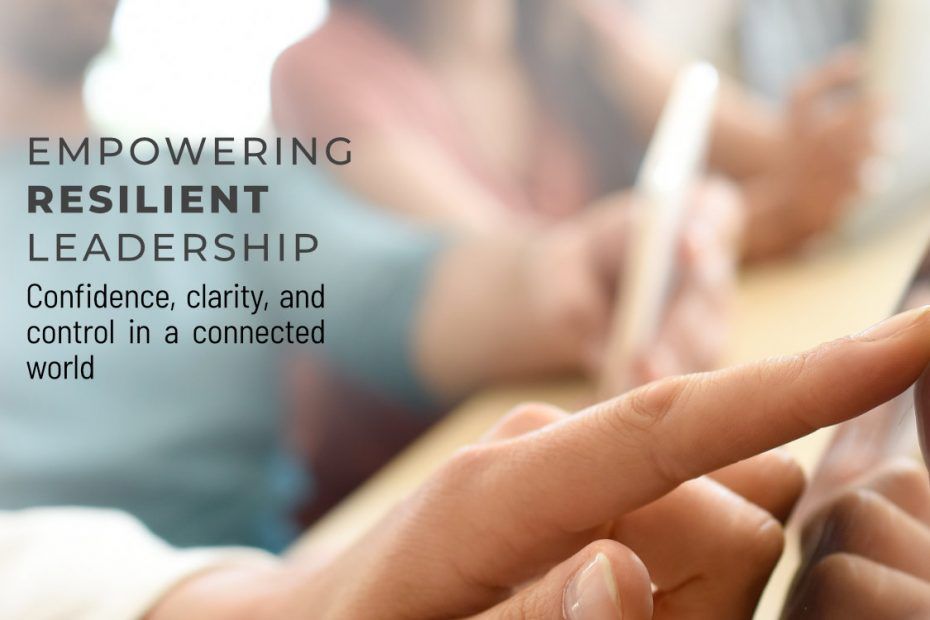Key Insights from the Lean Leader Summit 2025
A single software update can now trigger a geopolitical crisis. In a hyperconnected world, digital resilience isn’t just about uptime — it’s about national security, corporate survival, and public trust.
In today’s volatile digital landscape, resilience has evolved from a technical feature to a strategic imperative. The Lean Leader Summit 2025 made it clear: Resilient IT is no longer a nice-to-have — it is a core leadership responsibility in the digital age.
Technology no longer just supports business models — it shapes them. Agility, competitiveness, and security all depend on robust digital infrastructure. However, growing connectivity also increases vulnerability. Organizations face threats not only from technical failures but also from geopolitical tensions, cybercrime, and structural control loss.
Cyber Dominance: When Control Becomes a Leadership Challenge
The German Federal Office for Information Security (BSI) uses the term “Cyber Dominance” to describe a critical shift: technology vendors increasingly retain persistent access to devices and data — even after purchase. From smartphones to vehicles, the systems we rely on daily are no longer fully under our control.
This introduces a new leadership challenge: ensuring digital systems remain controllable, auditable, and defensible — especially when sourced internationally. Resilient IT requires visibility into and active management of technological dependencies. Technical control mechanisms — so-called control layers — are critical: they enable organizations to maintain sovereignty even when relying on non-domestic technology.
For CIOs, this means:
- Internal management of encryption keys and access controls
- Transparency and control over telemetry and software updates
- Systems designed to be auditable, verifiable, and temporarily isolatable
Resilience does not mean autarky — it means sovereignty through control.
Cybersecurity: Security as Product Accountability
With regulations like the Cyber Resilience Act, cybersecurity is shifting from reactive defense to embedded responsibility. Security must be integrated into the entire product lifecycle — from design through deployment and maintenance.
As highlighted by Alina Mehlhorn and Jan Thielscher at the Lean Leader Summit, key requirements include:
- Security by Design & Default for hardware and software
- Transparent software supply chains (e.g., via SBOMs)
- Structured vulnerability management and mandatory updates
- Close collaboration between enterprise architecture, product teams, and security functions
CIOs must break down silos and foster cross-organizational ownership of security. Communication with customers and regulators — e.g., through the Common Security Advisory Format (CSAF) — becomes an essential leadership task.
Data Protection: From Compliance to Capability
Data protection is often seen as a regulatory burden. In reality, it acts as an early warning system for organizational weaknesses and a foundation for trust. Daniela Will emphasized at the summit that data protection:
- Reveals outdated processes and technical debt
- Enforces transparency critical for crisis readiness
- Builds trust with customers, regulators, and internal stakeholders
Frameworks like IDW PS 9.860.1 enable organizations to measure data protection maturity and integrate privacy into governance, risk, and performance metrics — shifting it from obligation to operational discipline.
Sustainable IT: Responsibility Means Efficiency
IT’s environmental footprint is rapidly growing, currently accounting for 3–4% of global CO₂ emissions and rising. While digital technologies offer sustainability solutions, they also contribute to the problem.
Anita Schüttler pointed out: “Digital systems are not immaterial — they have a growing environmental impact.”
Forward-thinking IT leaders are:
- Designing energy-aware architectures and adaptive workloads
- Optimizing cloud usage and data transfers to reduce emissions
- Embedding green coding and carbon efficiency into development practices
Sustainable IT is no longer a trend — it’s a core design principle, a regulatory requirement, and a strategic business advantage.
Conclusion: Resilience Is the New Standard — and the Mandate for Modern Leadership
Resilient IT is no longer a technical aspiration — it is a strategic necessity. Regulatory, geopolitical, and societal pressures are rapidly redefining the baseline expectations for digital systems. In this landscape, resilience becomes more than system uptime or cybersecurity posture; it becomes a reflection of leadership.
The most important insight from the Lean Leader Summit 2025 was this: resilience is not just a technical property — it’s a leadership behavior.
It requires:
- CIOs and digital leaders who actively shape control, accountability, and alignment
- Cross-functional coordination across architecture, product, and security
- A culture capable of navigating uncertainty, complexity, and continuous change
Resilience is not about being unbreakable — it’s about being adaptive, trustworthy, and future-ready under pressure.
Organizations that internalize this mindset gain more than compliance. They gain the strategic freedom to act with confidence in an unpredictable world.
Resilience is not a destination. It’s the new standard — and the leadership mandate of our time.
References
- Mehlhorn, Alina & Thielscher, Jan (2025). Information Security and the Cyber Resilience Act – A Strategic Blueprint for IT Leaders & Architects. Presentation at Lean Leader Summit 2025.
- Will, Daniela (2025). GDPR as a Superpower – Why a Smart Data Protection Organization is Your Resilience Booster. Presentation at Lean Leader Summit 2025.
- Schüttler, Anita (2025). Shared Responsibility – How the Energy Transition Will Influence the Way We Build and Run Software. Presentation at Lean Leader Summit 2025.
- Plattner, Claudia (2025). Digital Sovereignty: Foundation for Security and Progress. Table.Forum – Table.Briefings, Table Media GmbH.
✅ Explore more:
Discover more thought leadership and expert insights from the Lean Leader Summit — visit our Lean Academy to access all presentations and resources.
👉 Find the talks on our LeanACADEMY
🎓 Join our free webinar – July 30:
“Building a Future-Proof Information Security Strategy”
Gain practical guidance and proven strategies to strengthen your digital resilience.
👉 Register now for the free webinar
🤝 Let’s talk:
Interested in how your organization can become more resilient and future-ready?
Get in touch — our experts are happy to support you.
👉 Contact us here

